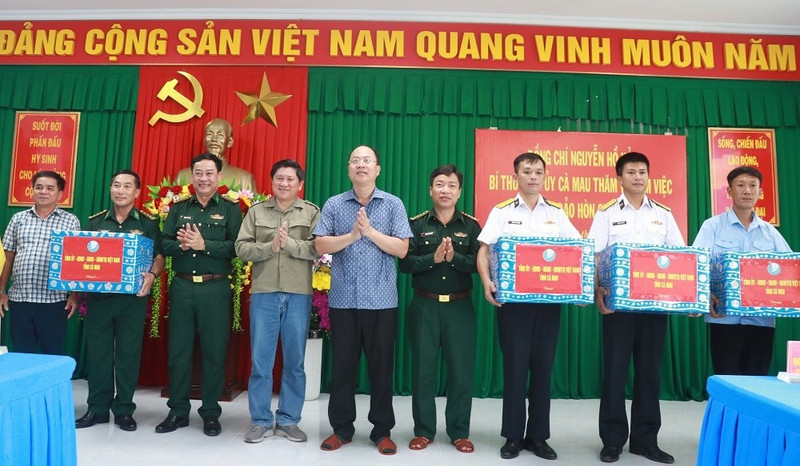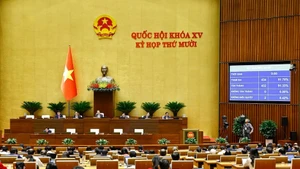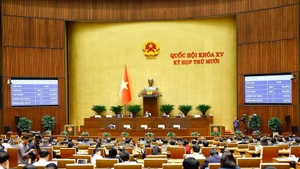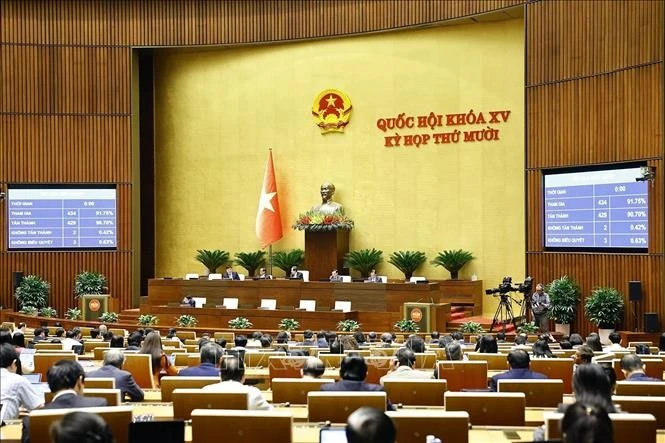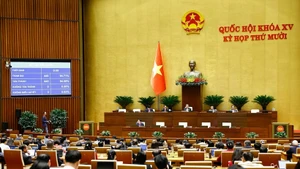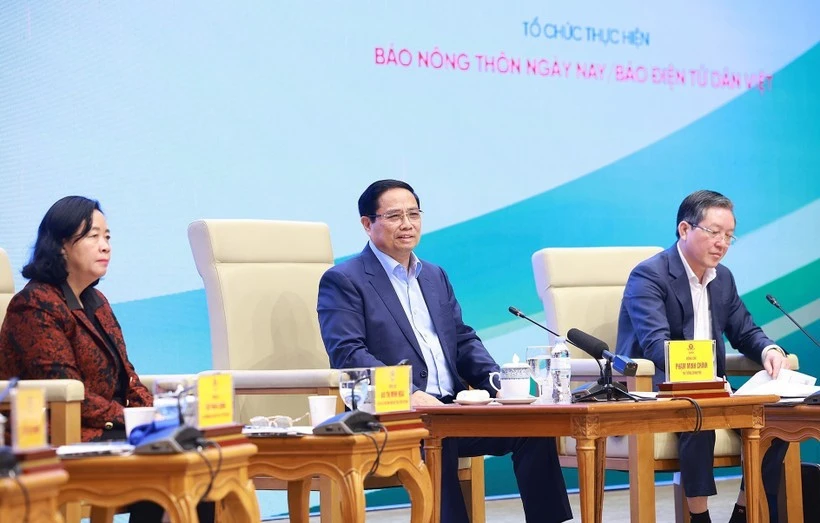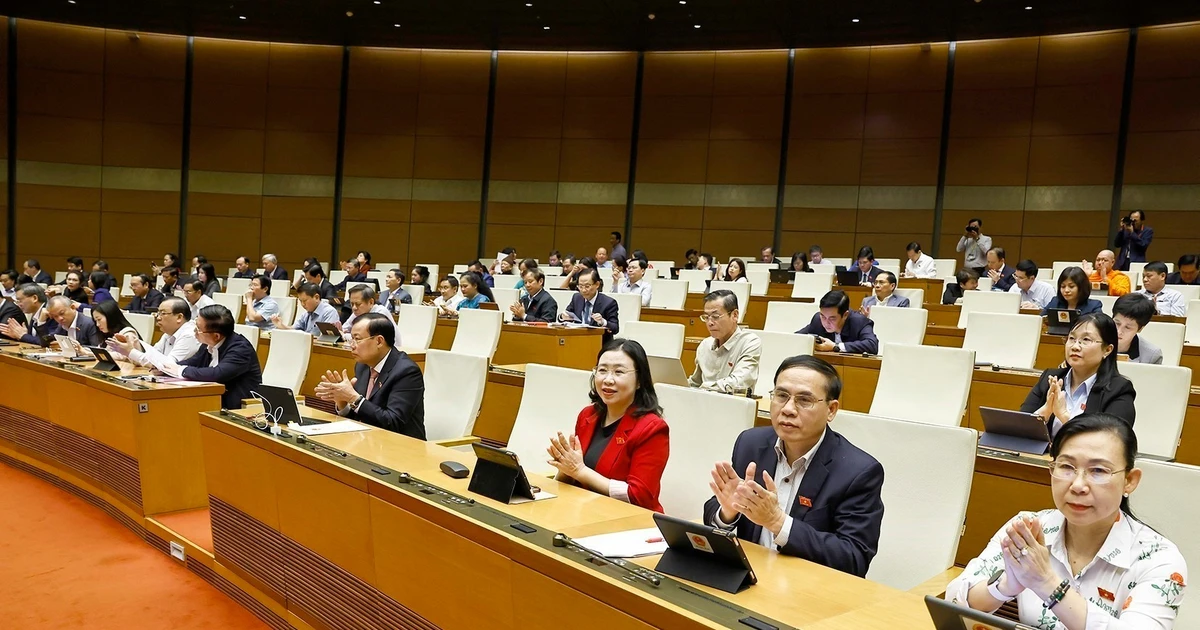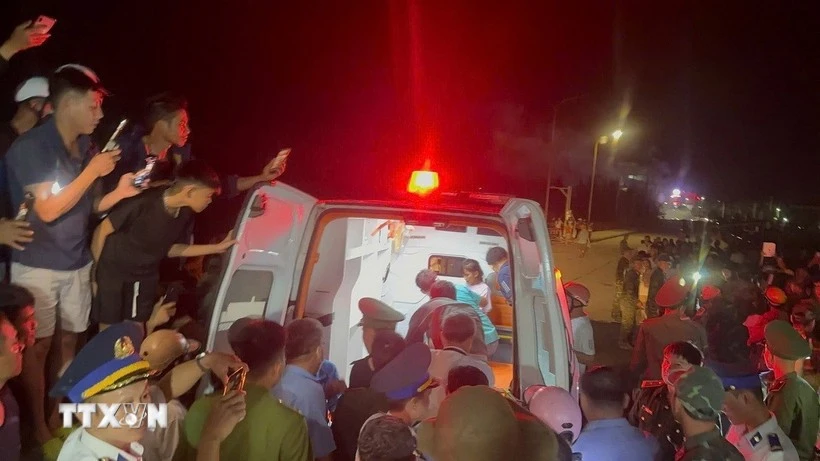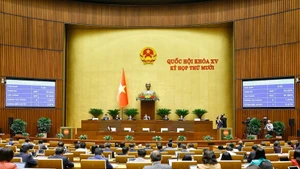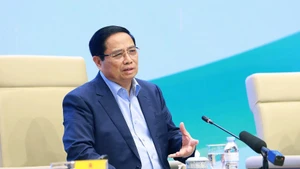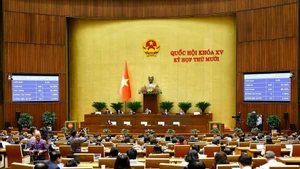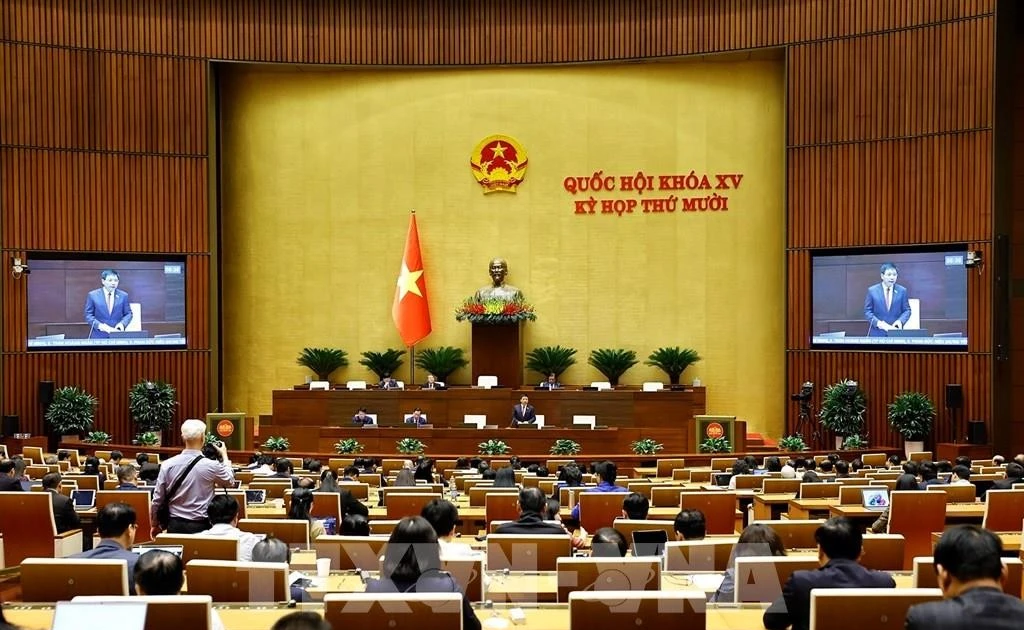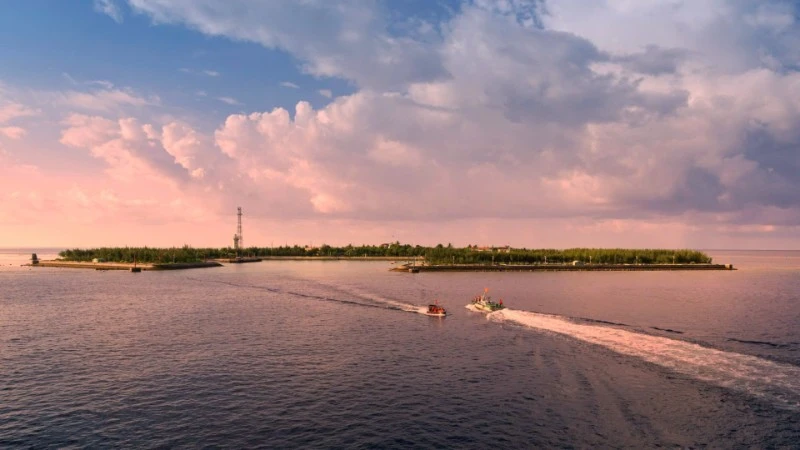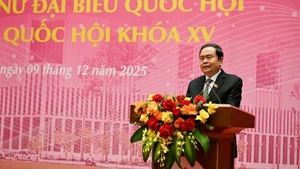In the interview, Hai outlined the province’s strategic vision, its leadership’s resolve to overcome challenges, and its ambition to seize historic opportunities—positioning Ca Mau to take off as a dynamic growth hub for both the Mekong Delta and the nation at large.
Q: Ca Mau is currently presented with new development opportunities as several national key projects are underway. How do you assess the potential and impact of these projects on the province’s future?
A: The Party Committee, local authorities, armed forces, and people of Ca Mau are delighted by the launch of strategically significant projects that promise to generate strong momentum for the province’s development. Initiatives such as the expressway from the old Ca Mau city to Dat Mui, the Dat Mui–Hon Khoai port road, Hon Khoai seaport, and the upgrade of Ca Mau Airport are opening up new avenues for growth.
We view this as a vital infrastructure boost. Once completed, these expressways will tightly connect Ca Mau with other Mekong Delta provinces, significantly reducing travel times to major southern economic centres and facilitating the transport of goods—particularly high-quality agricultural and seafood products.
The airport upgrade will serve as a crucial bridge for trade and tourism. Meanwhile, the dual-purpose seaport at Hon Khoai will act as strategic leverage, transforming Ca Mau into an international trade gateway, enhancing exports, and deepening economic integration, all while reinforcing regional defence and security.
With proactive leadership and the highest political resolve, the province has mobilised all available resources to expedite these projects and maximise their effectiveness. Compensation and site clearance have progressed swiftly, with strong public support.
In addition, the previous merger of Ca Mau and Bac Lieu provinces has expanded the development space, endowing the new Ca Mau with unique potential to attract substantial domestic and foreign investment. The province is now well-positioned to play a pivotal role in the regional supply chain.
Q: Ca Mau has long been regarded as the “southernmost end” of the country. However, some suggest it should be seen as the “starting point” and a pioneer. What is your perspective on this?
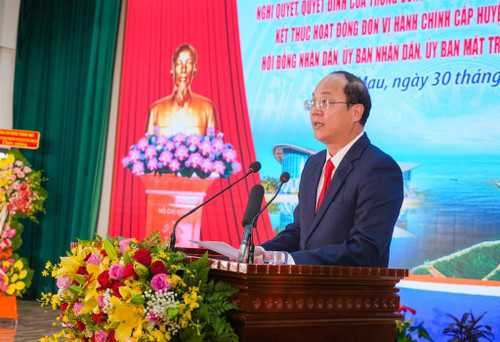
A: We believe this is a highly strategic and accurate viewpoint. Historically, Ca Mau’s location at the tip of the mainland has led to its perception as the country’s southernmost end. However, this mindset must evolve.
Being surrounded on three sides by the sea gives Ca Mau a distinct advantage: it serves as a gateway to the East Sea/South China Sea and the Gulf of Thailand, situated along an international trade axis. It is both the starting point for maritime journeys and a key entryway for international engagement.
Rather than viewing Ca Mau as the “end”, we must embrace it as the “beginning”—a launchpad for new development across the Mekong Delta and the nation.
During his visit, Party General Secretary To Lam affirmed Ca Mau’s status as the southernmost province, offering a fresh perspective. Likewise, General Phan Van Giang, at the groundbreaking ceremony of key projects, emphasised Ca Mau’s “frontier” position.
This vision of Ca Mau as the “southernmost starting point” has been thoroughly embraced by Party members and the local population. The province is no longer seen as the final stop, but as the opening gateway and pioneer in Viet Nam’s marine economic development strategy.
Q: To realise its vision as a “pioneering hub”, what long-term strategies does Ca Mau have to unlock its marine economic potential in alignment with key projects?
A: With over 310 kilometres of coastline, an exclusive economic zone exceeding 120,000 square kilometres, and rich marine and mangrove ecosystems, Ca Mau is ideally positioned to develop a comprehensive marine economy. This is our strategic resource for long-term development. To harness this potential, the province has identified five key development pillars:
First, developing marine economy. Ca Mau aims to become a vibrant regional centre by modernising its seafood industry—from harvesting and aquaculture to processing and export. We are committed to maintaining our status as the national shrimp capital, building a strong Ca Mau shrimp brand to enhance value and competitiveness globally.
Second, developing clean and renewable energy. Capitalising on wind and solar resources, Ca Mau seeks to become a national hub for clean energy, establishing a sustainable and environmentally friendly economic foundation.
The vision of Ca Mau as the “southernmost starting point” has been thoroughly embraced by Party members and the local population. The province is no longer seen as the final stop, but as the opening gateway and pioneer in Viet Nam’s marine economic development strategy.
Third, boosting integrated infrastructure. The province is actively collaborating with stakeholders to complete the North–South Eastern Expressway, coastal roads, and transport links connecting marine economic zones to inland areas. This will attract investment, expand development space, and strengthen infrastructure connecting industrial and economic zones.
Fourth, enhancing human resources and tourism. With increasingly modern infrastructure, Ca Mau’s tourism sector is poised for a breakthrough. Concurrently, we are prioritising the training of skilled workers in key sectors such as seafood, port logistics, renewable energy, and tourism services to meet the demands of the new development phase.
Fifth, maintaining defence, security, and sovereignty. Marine economic development will be closely linked with safeguarding national sovereignty at sea. We are enhancing fishing logistics, promoting sustainable marine resource management, and integrating economic growth with social stability, safety, and climate change resilience.
All these strategic directions converge on a singular goal: to build Ca Mau into a fast-growing, sustainable province anchored in marine economic strengths. This will contribute significantly to Viet Nam’s marine economic strategy and affirm Ca Mau’s role as a dynamic growth pole for the Mekong Delta and the nation.
Thank you for sharing.
